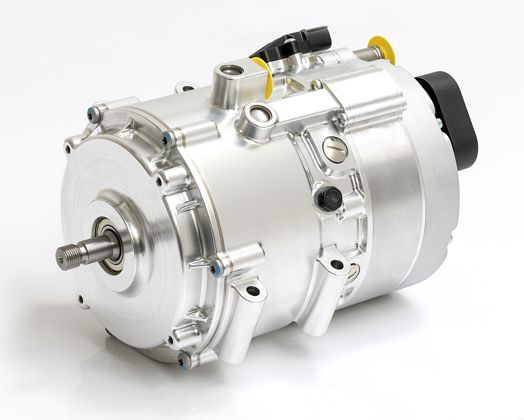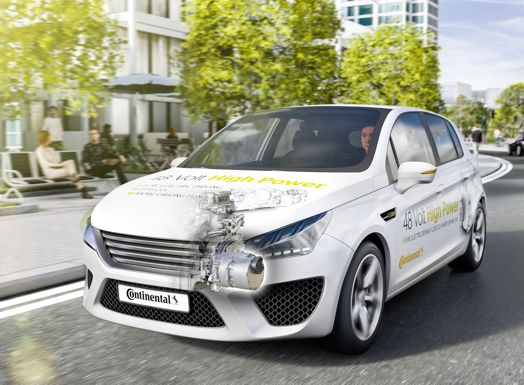Continental unveils 48-volt high-power drive system
3 July 2019
Continental announced a 48-volt high-power drive system with a peak output of 30 kW, which could enable 48-volt full-hybrid drive technology.
A full-hybrid vehicle with 48-volt technology was previously deemed impossible. For a hybrid vehicle to drive using just electricity, the electric part of the drive would normally use high voltage technology of up to 800 volt. However, the new 48-volt hybrid system provides high-power output similar to that of a high-voltage electric drive.
The Continental 48-volt high-power system, comprising an electric motor complete with integrated power electronics and a battery, reduces fuel consumption by around 20% compared with similar vehicles fitted with combustion engines. At the same time, the new 48-volt technology is also considerably cheaper than the high-voltage systems used up to now, according to the company.

The 48-volt systems were previously known as mild or P0 hybrids. They involve relatively unobtrusive electrification of the powertrain. Fuel consumption is reduced mainly with the support of the combustion engine (boosting) during acceleration and the recovery of excess kinetic energy (recuperation) when the vehicle decelerates. However, purely electric driving is not possible with such systems.
In the latest development, the 48-volt system was repositioned in the powertrain. The electric motor was no longer placed in front of the combustion engine on the crankshaft, but behind it—between the combustion engine and transmission (P2 hybrid). This meant that fuel savings were able to increase and, in certain situations, such as driving through a 30 km/h speed limit zone, the vehicle could be driven using the electric motor alone.

With the new 48-volt high-power technology, this hybrid system enables the same functionality as previous, full-hybrid vehicles, Continental said. The key component here is a new, water-cooled electric motor, the peak output of which was doubled to 30 kW in comparison with that used previously. The increased power was achieved while maintaining the diameter of the motor, and with only a small increase in weight and installation space. Electric-only driving is possible up to a speed range of 80 to 90 km/h.
The integrated power electronics also uses a new technology that now enables it to handle significantly higher currents, and a level of electrical efficiency that surpasses the previous system by almost 10%. And during recuperation (the recovery of excess kinetic energy when the vehicle decelerates), the new technology is much more effective than was previously the case, because the losses incurred in the electric drive system has been halved.
Another advantage of the new hybrid solution from Continental is its relatively low costs, according to the company. The reason for this is that a 48-volt system requires considerably less effort in terms of insulation protection, electrical components are smaller and cheaper, and even the design can be made significantly more compact, because smaller gaps are required between the individual components than is the case with high-voltage technology.
Continental is showcasing its new 48-volt high-power technology—which is ready for series development—in a Ford Focus test vehicle.
Continental is also considering the application of the new system in a 48-volt plug-in hybrid drive. This could be made possible if, for instance, the system was supplemented with on-board charging technology and a larger battery. The key factor for developing such 48-volt plug-in hybrid technology would be whether CO2 emissions could be reduced to below 50 g/km—the threshold value for zero- and low emission vehicles (ZLEV) under the post-2020 EU CO2 emission regulations.
Source: Continental